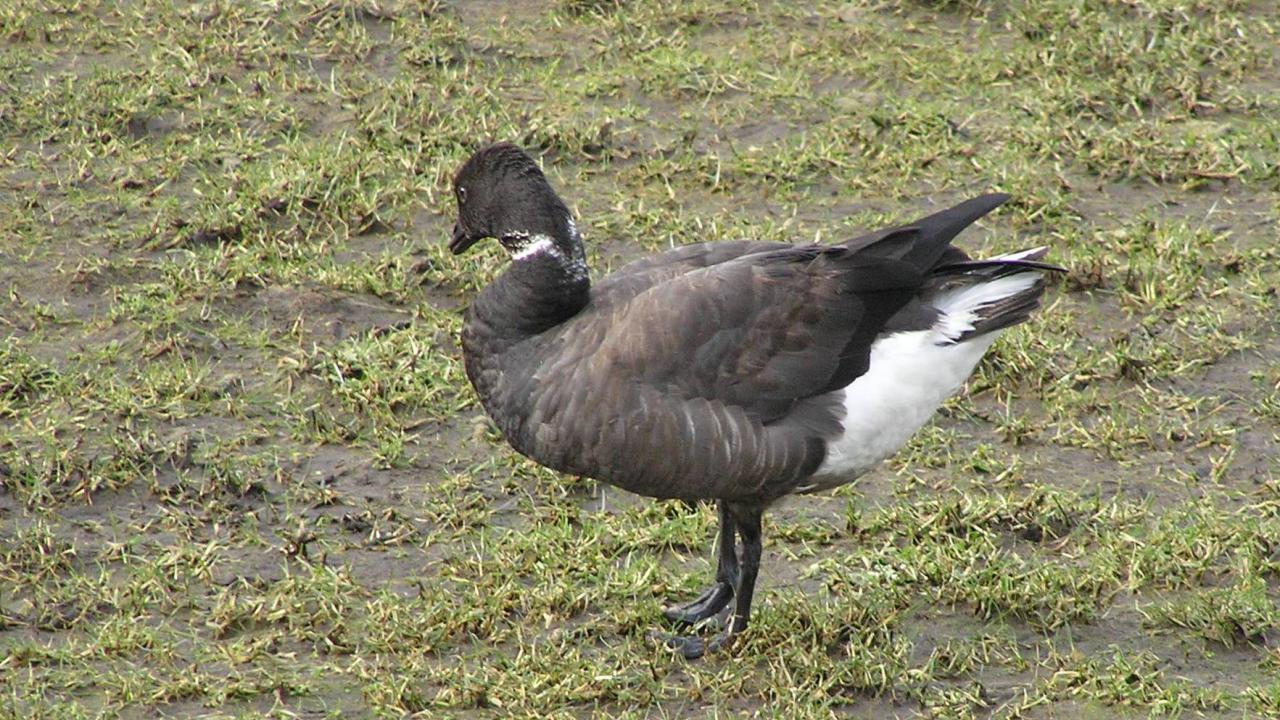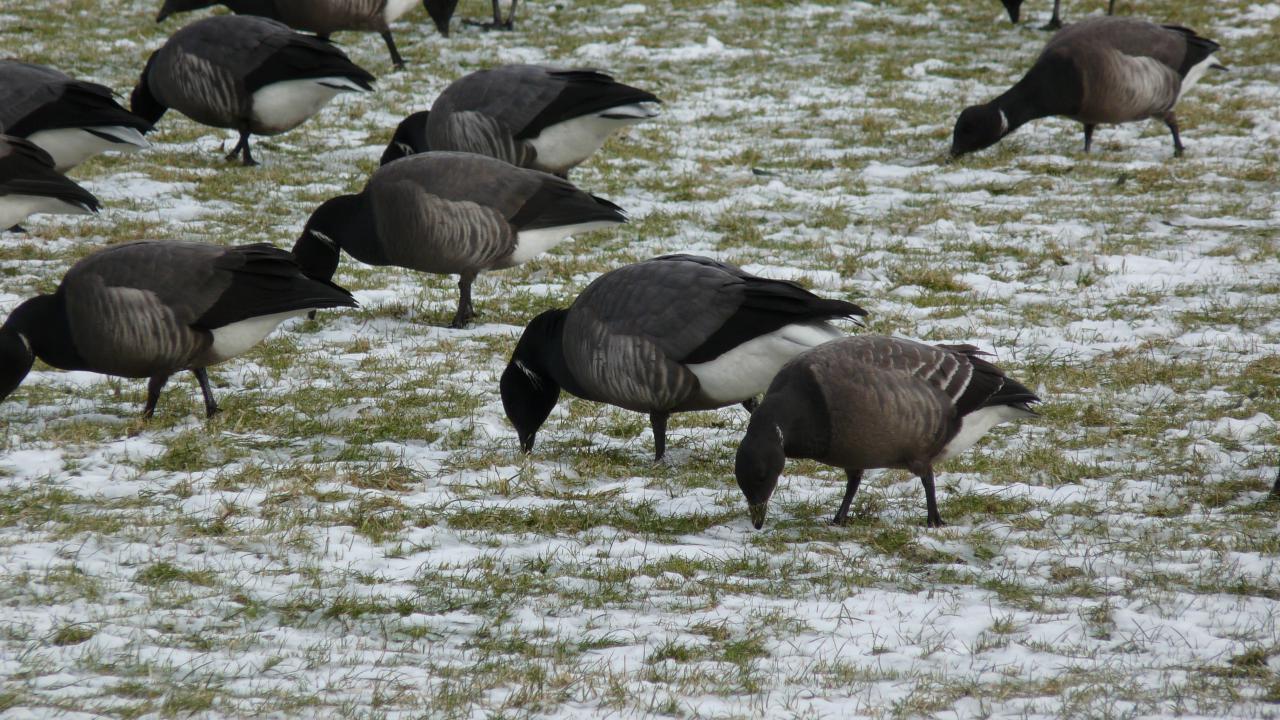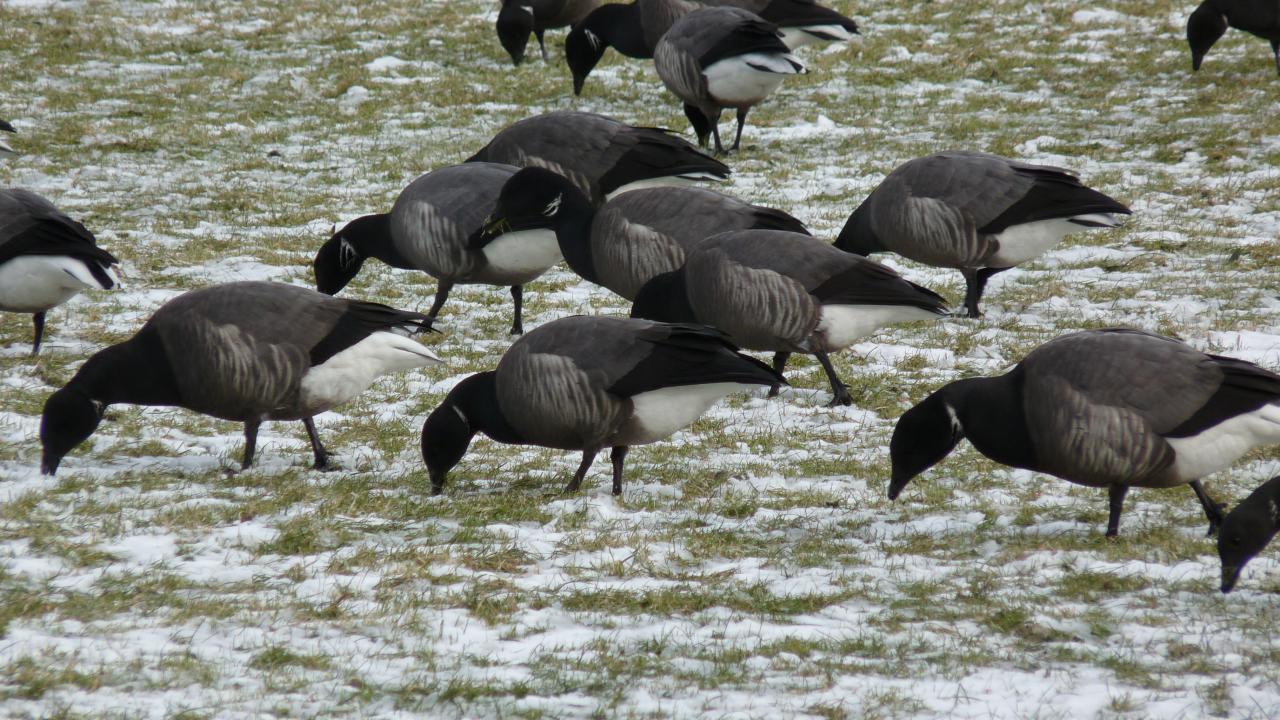Description:
Three different species of Brant Goose are distinguished, which are sometimes also regarded as subspecies.
The vast majority of Brant Geese in Northwestern Europe (including the Netherlands) come from breeding areas in Siberia.
These are also called "Dark-bellied Brant Geese".
A second Brant Goose species, the "Pale-bellied Brant Goose", breeds on Spitsbergen, Greenland and in Northeast Canada.
These Pale-bellied Brant Geese mainly winter in Denmark, the east of England and Ireland and the Atlantic coast of the United States.
Every winter in the Netherlands a few Pale-bellied Brant Geese are seen.
This can amount to hundreds when the Danish Pale-bellied Brant Geese migrate to the Netherlands in severe winter weather.
As the name suggests, Pale-bellied Brant Geese are lighter than Dark-bellied Brant Geese.
This applies not only to the belly and the flanks (in Pale-bellied Brant Geese light gray to white, up to between the legs), the back is also slightly lighter.
The Dark-bellied Brant Goose's belly is dark between and behind the legs, has a dark back and shows weak pale bars on rather dark flanks.
The third species and also the rarest in Northwestern Europe (including the Netherlands) is the Black Brant Goose.
Black Brant Geese breed in northeastern Siberia, Alaska and northwestern Canada and winter on the west coast of the United States.
Black Brant Geese are also found every winter in the Netherlands, however only a few individuals.
What is immediately noticeable in Black Brant Geese are the bright white flanks that contrast strongly with the dark back and belly, both of which are clearly darker than in the other two Brant Geese species.
Another characteristic is the white spot on the neck: it is more extensive in the Black Brant Goose than in the other two species and often closes almost like a collar.
1st photo: Schiermonnikoog, The Netherlands, 17 February 2007
2nd & 3rd photo: Lauwersoog, The Netherlands, 13 February 2010
4th photo: Together with a Black Brant (in the front). Polder Burgh- en Westland Midden, Haamstede, The Netherlands, 13 January 2021




